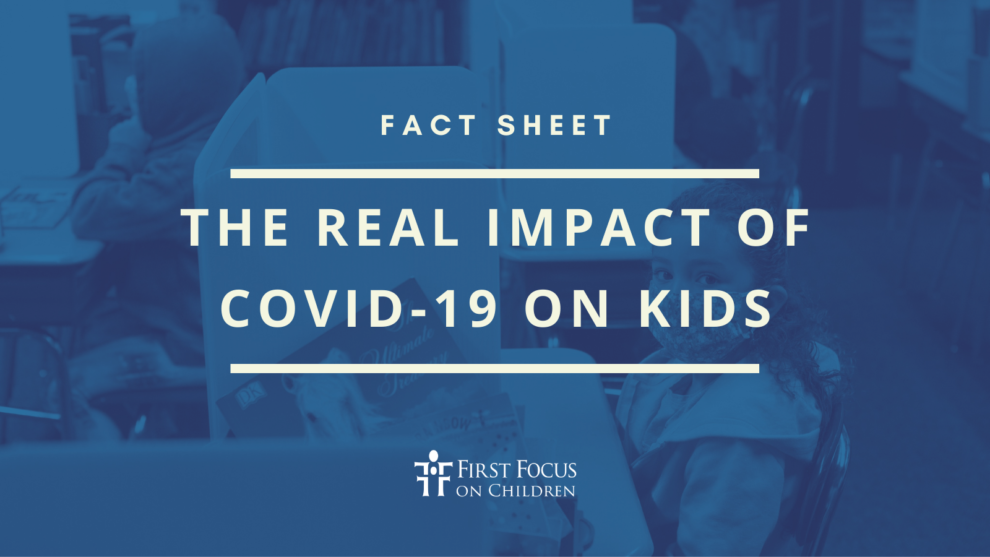
Way back at the beginning of this pandemic, a narrative took hold that kids are not affected. Now, more than a year in, it is imperative to acknowledge that the raw numbers only begin to hint at the event’s enormous impact on our nation’s 74 million children.
The Numbers:
- 3.6 million: the number of children who have contracted COVID-19.
- Nearly 15,000: the number of children hospitalized with COVID-19.
- 3,000: the number of children who developed the rare but serious condition known as multisystem inflammatory syndrome in children (MIS-C)
- 279: the number of children who have died from COVID-19.
The Impact:
Grief:
- Roughly 40,000 children have lost a parent to COVID-19. The number, reported in JAMA Pediatrics, represents a 20% increase over non-COVID parental deaths. And this is just through February 2021. Three-quarters of those children were adolescents, and one-quarter were children younger than 10.
- More than 4,200 children lost a parent or caregiver in New York State alone. As many as one-quarter of these children are at risk of entering foster or kinship care.
Increased racial inequity:
- The rate of COVID-19 hospitalization is five times higher for Black children and eight times higher among Latino or Hispanic children than it is among white kids, according to an August CDC study.
- The pandemic pushed the monthly poverty rate up nearly 2 points to 16.7% in September 2020, with increases particularly acute for Black and Hispanic individuals, as well as for children.
- Before the pandemic, as many as 16.9 million children lacked home internet access, and 7.3 million children did not have a computer at home, inhibiting their ability to participate in online learning. These students disproportionately live in low-income households and are more likely to be Black, Latinx, or Native American.
- Feeding America projects that 21% of Black individuals (1 in 5) may experience food insecurity in 2021, compared to 11% of white individuals (1 in 9).
- The overrepresentation of Black and Hispanic youth in detention increased during the pandemic, despite a historic drop in the overall number of detained children.
Expanded educational gaps:
- An estimated 3 million marginalized students — those with disabilities, experiencing homeless, in foster care, migrants students, and English-language learners — have stopped attending school. That number is equivalent to the entire school-aged population of Florida.
Increased — yet grossly underestimated — homelessness:
- At the beginning of the 2020-21 school year, 420,000 fewer students were identified as homeless, despite evidence of increasing homelessness. These figures suggest that as many as 1.4 million children experiencing homelessness may have gone unidentified and unsupported by their school during the pandemic.
- More than 60% of children experiencing homelessness lacked internet access.
Rampant hunger:
- Feeding America projects that 42 million people (1 in 8), including 13 million children (1 in 6), may experience food insecurity in 2021.
- Child food service programs served 1.65 billion fewer breakfasts and lunches between March and November of 2020, a 30% decrease from the previous year.
- Experts project that the number of children under 5 experiencing life-threatening food deficits will grow by nearly 7 million, or 14%, around the world, according to research published in The Lancet.
Decline in overall health and wellness:
- Preliminary data from the Centers for Medicare and Medicaid Services projects a 44% drop in child screening services and mental health services for 2020, a 22% drop in vaccinations for children under 2, and a nearly 70% drop in dental services.
Soaring child poverty:
- Children began 2020 with the highest monthly poverty rate at 18.7%, according to Columbia University’s Center on Poverty and Social Policy. By September, that rate had increased to 20.4% — a rise of nearly 2 points. Consequently, the American Rescue Plan will have the greatest impact on child poverty – cutting it by roughly 56% in 2021.
- In general, households with children have been more likely to experience job loss, a decline in household income, and the loss of health insurance and other benefits during the pandemic.
- Until the American Rescue Plan passed, 3.7 million U.S. citizen and green card-holding children were denied stimulus checks because they lived in families with mixed immigration status, adding to the poverty rate for children of immigrants.